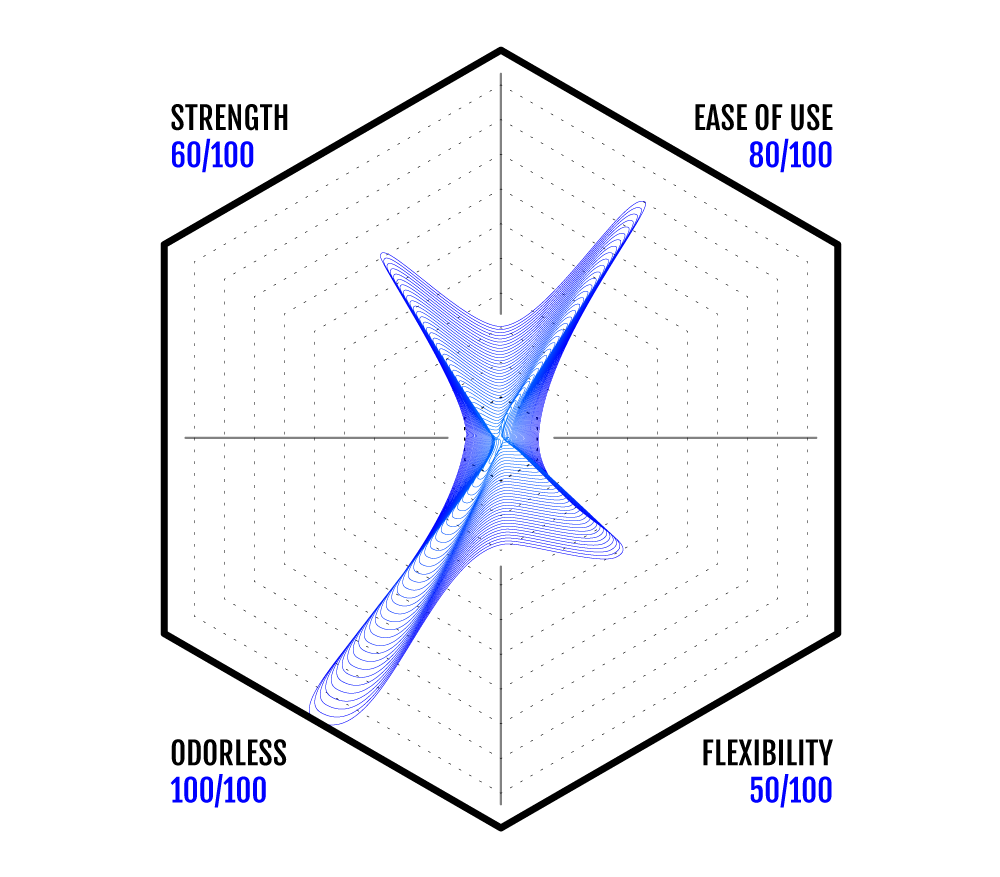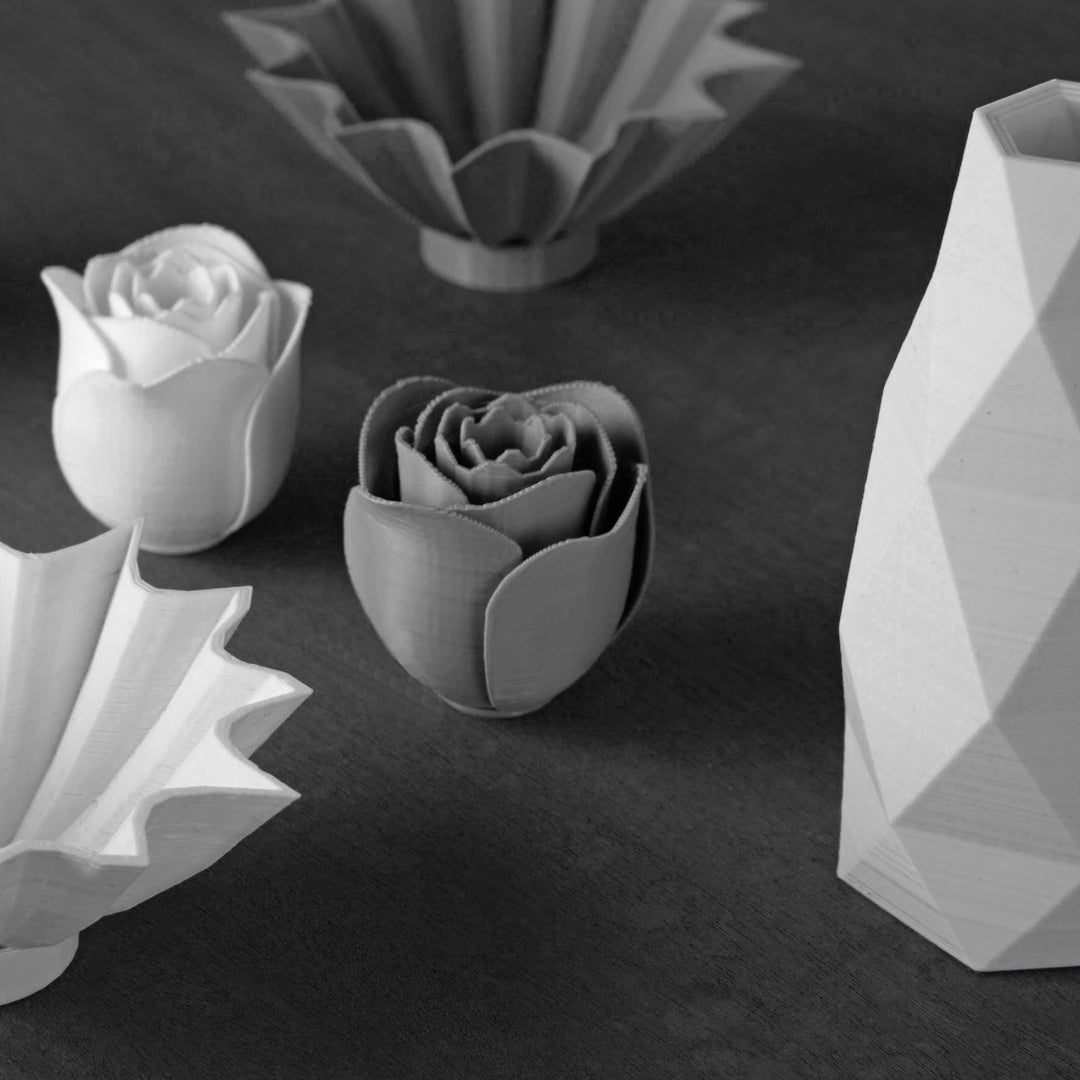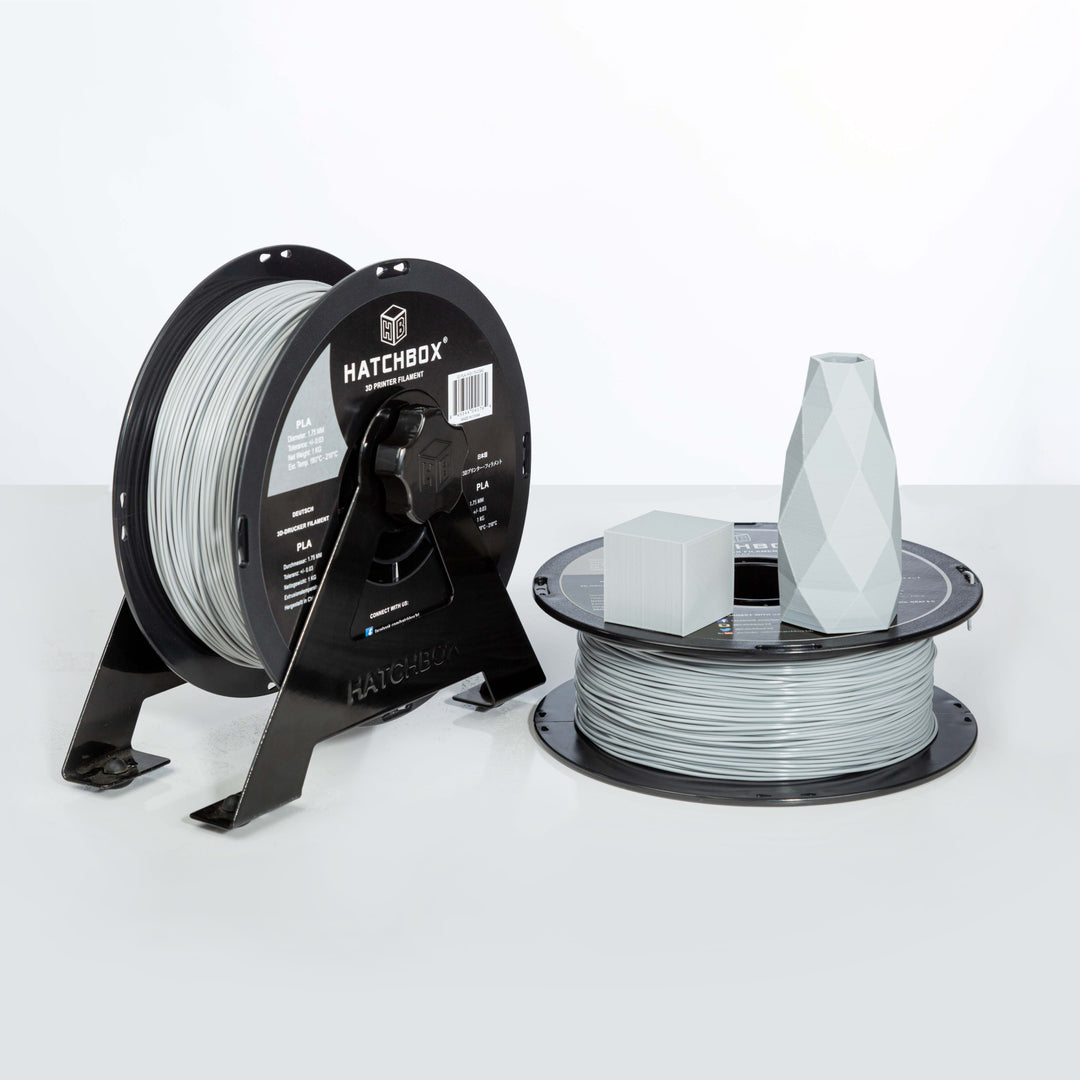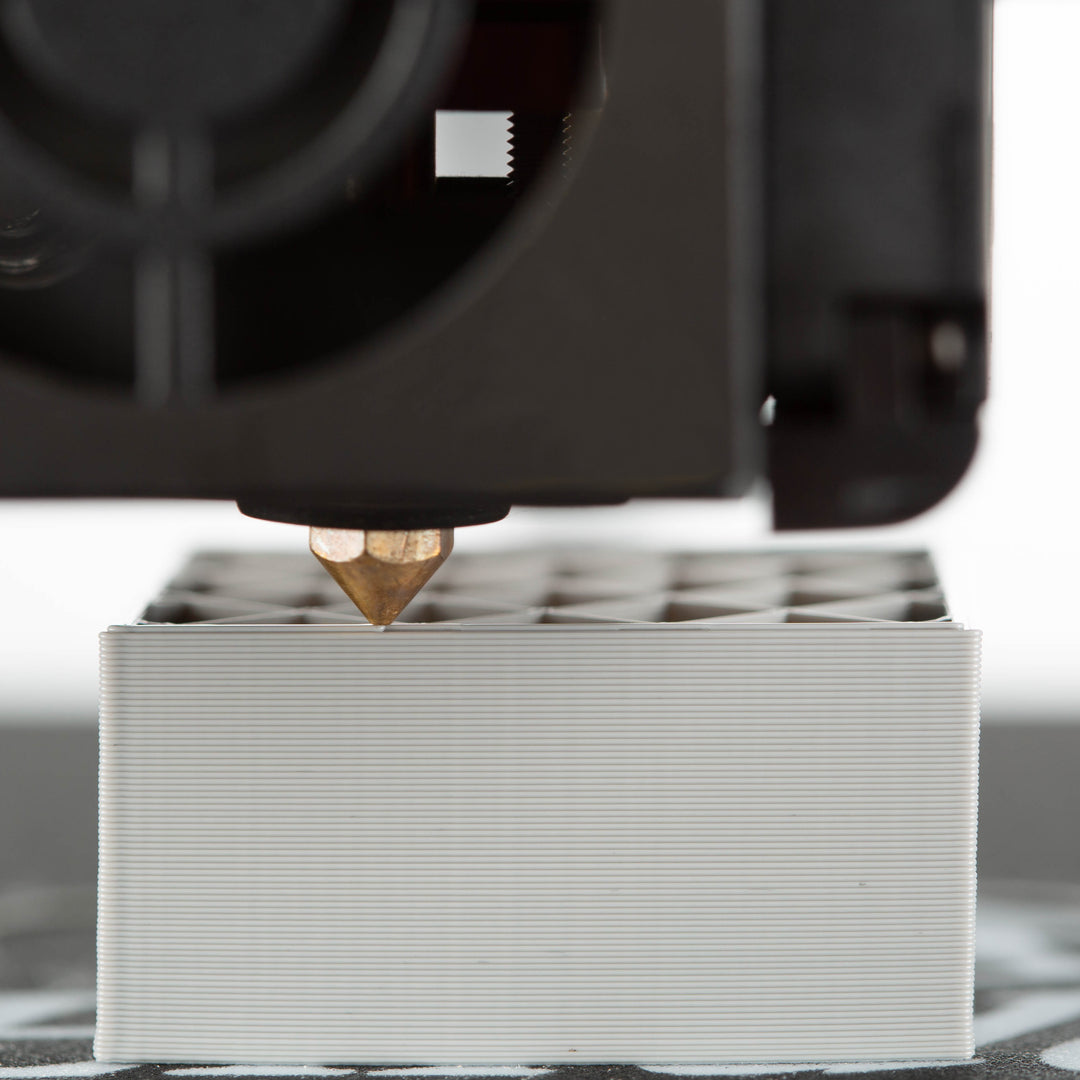WHAT IS PLA?
Accessibility is why Polylactic Acid (PLA) is used to make kid-safe toys, medical implants, industrial prototypes and countless household projects. Unlike other materials, PLA Filament prints at lower nozzle temperatures and adheres to unheated beds. As a bonus, PLA’s low emissions are safe for use without a ventilated enclosure.
PLA is also safe for the planet. Made from renewable resources such as corn rather than oil, PLA sequesters atmospheric CO2. The printed object’s lifecycle can end just as safely as PLA biodegrades into non-toxic materials.
Here is everything you need to know about where PLA comes from, how it is made and what makes PLA so popular.

WHO CREATED PLA?
In the early 20th Century, quantum physics was transforming chemistry by explaining, for example, how covalent bonds form polymers. The industrial giant DuPont decided it had to get in on the action as these discoveries led to remarkable chemistry breakthroughs.
One of the scientists DuPont recruited in 1927 was organic chemist Wallace Carothers. His research lab invented polymers that DuPont would go on to market as Nylon and Neoprene. Carothers also created PLA but for decades afterward DuPont’s production process was too expensive for businesses other thanthe pharmaceutical industry.
Flash forward to the 1990s when an idealistic chemist named Patrick Gruber decided he would help end the world’s reliance on petroleum. One weekend, Gruber and his chemist wife Sally cooked up the first batch of corn-based PLA on their kitchen stove.
HOW IS PLA MADE TODAY
Though modern PLA manufacturing has scaled up from that stove-top chemistry experiment, the process is still the same. Everything starts with a starchy plant such as corn or beets. Once the plant’s starches are converted into dextrose, a fermentation stage uses microorganisms to convert thissugar into lactic acid.
Chaining the lactic acid into a polymer can be done directly but most manufacturers take a two-step approach. First, they combine lactic acid molecules into ring-shaped lactides. Then they polymerize the lactides into long-chain molecules of PLA. Unfortunately, the reaction also creates water that has to be removed in a vacuum or through distillation.
Now dried and pelletized, the PLA is ready for industry. What started out as corn kernels becomes injection-molded bottles, plastic bags, food packaging and even medical implants.
WHAT IS INGEO?
Hatchbox makes filament using Ingeo PLA from NatureWorks, the company that Patrick Gruber co-founded to commercialize plant-based PLA.NatureWorks sources starchy plants to produce lactic acid, lactides and ultimately pellets of its Ingeo PLA.
But not all PLA is made the same. Hatchbox PLA filament uses versions of Ingeo specially-formulated to providegood build-plate adhesion, low emissions and low warping or shrinkage as the part cools.
NatureWorks still shares Patrick Gruber’s concern for the planet. More than a raw material, corn sequestersatmospheric CO2 and reduces fossil fuels’ impact on Earth’s climate.Someday, NatureWorks could convert CO2 directly into PLA.
The company cares just as much about the end of Ingeo PLA’s lifecycle. NatureWorks’ composting and recycling technologies help keep Ingeo PLA out of landfills and incinerators.
HOW INGEO IS MADE

HARVESTING CARBON DIOXIDE
Many plastics start out as oil, the remains of plants that extracted CO2 from ancient Earth’s atmosphere. NatureWorks skips the million-year process of turning CO2 into oil by making Ingeo PLA from plants grown today. Unlike oil, plants are renewable resources that harvest greenhouse gases from modern Earth’s atmosphere.

FROM PLANTS TO LACTIC ACID
The starches in plants like corn or beets are molecular chains of glucose. NatureWorks uses enzymes to break these chains into simpler sugars. Microorganisms eat the sugars in a fermentation process similar to using yeasts to make bread or beer. Rather than releasing CO2 or alcohol, these microorganisms release lactic acid.

RINGING IN THE LACTIDES
You can make forms of PLA directly from lactic acid. But in order to get the right properties for industrial use, NatureWorks adds another step. Their proprietary process removes water from the lactic acid to create ring-shaped molecules called lactides.

PLA POLYMERIZATION
The final stage uses special catalysts to break the lactide rings. These open rings then connect together into long molecular chains of polylactic acid. As the PLA emerges from this process, NatureWorks forms it into pellets of Ingeo PLA that companies like HATCHBOX use as feedstock for their own products.
INGEO - ECO-FRIENDLY PROPERTIES

WHAT IS ECO-PROFILE?
With a mission to make plastics more sustainable, NatureWorks considers its environmental impact far beyond the factory floor. The company’s perspective stretches all the way from the fields of corn to the truck carrying Ingeo PLA pellets from the factory. This Eco-Profile measures how Ingeo impacts the environment.

GREENHOUSE GAS EMISSIONS
Greenhouse gas concentrations in our atmosphere is at record levels, driving climate changes that will profoundly affect modern civilization. Making products from Ingeo PLA is one small step towards reversing this trend as its production emits seven times fewer greenhouse gases than petroleum-based plastics such as ABS.

NON-RENEWABLE ENERGY USE
Most greenhouse gas emissions come from fossil fuels so consuming less non-renewable energy also slows climate change. The raw materials for most plastics require energy-intensive oil refining. Since plants get their energy from the Sun, making Ingeo PLA consumes nearly two-thirds less energy than ABS production.
PLA INDUSTRIAL USES

MEDICAL FIELD / HEALTHCARE
When made with the right solvents and additives, PLA is bio-compatible and sees widespread use in medical applications from drug delivery systems toorgan modeling. PLA is also a promising material for temporary implants. Joints can regrow around 3D-printed PLA scaffolds which the body breaks down into non-toxic lactic acid.

ENGINEERS
Engineers use PLA for rapid prototyping since it is easy to print, non-toxic and does not shrink much when it cools. Today, many industries are going beyond classic prototyping and adopting 3D printing for finished parts. The toy industry, for example, uses PLA to create limited-run or customized products that are safe for kids.

FOOD PACKAGING
Bottles and other food-safe packaging are already made from PLA. Since it comes from plant-based resources, PLA is more sustainable than other petroleum-based plastics used in food packaging. And with the growing concern over microplastic waste, PLA’s ability to biodegrade makes it even more attractive to the food industry.
EVERYDAY USERS
Kid-safe and pet-safe, PLA is the most accessible material for everyday 3D printing. All filament-based printers from the most affordable consumer-grade products on up let you use the material. Whether you are repairing a household item or unleashing your creativity, there is a color and blend of PLA for every project, explore all 1.75 pla filament colors.

PLA PRINT SETTINGS
SIZE AVAILABILITY: 1.75MM | 3.00MM
RECOMMENDED EXTRUSION TEMPERATURE: 180°C - 210°C
PLATFORM ADHESION: Blue Painters Tape
RECOMMENDED BUILD PLATFORM TEMPERATURE: 0°C - 60°C
PLA BENEFITS

NO ODOR

MINIMAL WARPING

NO HEAT BED REQUIRED
ADVANTAGES & DISADVANTAGES OF PLA

PLA ADVANTAGES
PLA is one of the easiest filaments to work with. You can use lower nozzle and bed temperatures while printing and finish your parts with a variety of post-processing methods. Aesthetically, PLA produces better surface details and comes in a wider range of colors and blends. Best for kids, you do not need to ventilate toxic fumes.

PLA DISADVANTAGES
PLA is a poor choice for mechanical parts since it has a lower tensile strength than ABS or PETG. Especially in high temperatures, PLA parts are more likely to deform under stress. And PLA’s biodegradability weakens parts even more over time. Choose PLA instead for rapid prototyping, aesthetic prints and similar applications. PEEK is another great material if more mechanical strength is needed.

PRINTING TIPS FOR PLA
Dial in your print settings by starting with a 180°C nozzle temperature and 40mm/s print speed. Adjust from thereto get the best results. Run the part cooling fan at 100% except during the first few layers when adhesion matters more. And since PLA becomes brittle as it absorbs moisture, store PLA filament in airtight enclosures.






